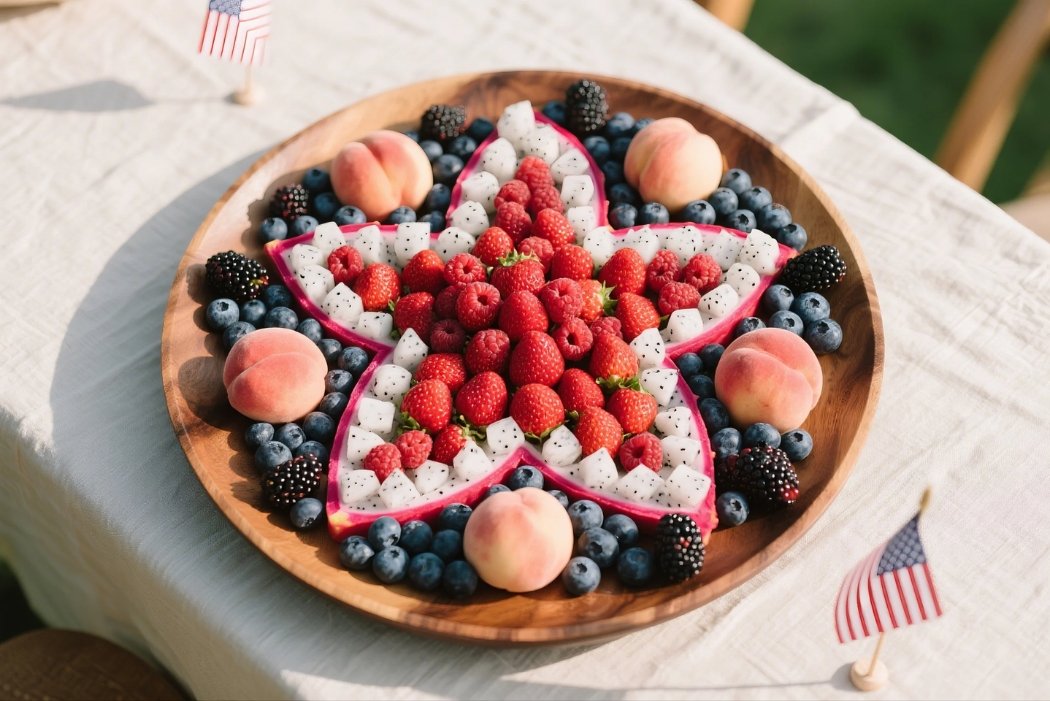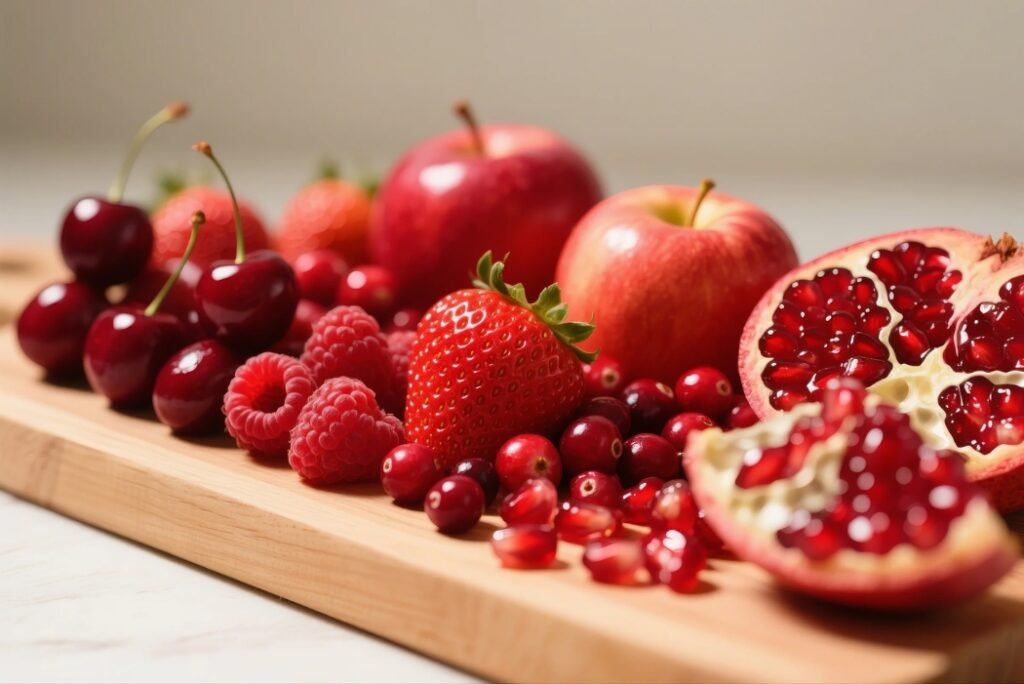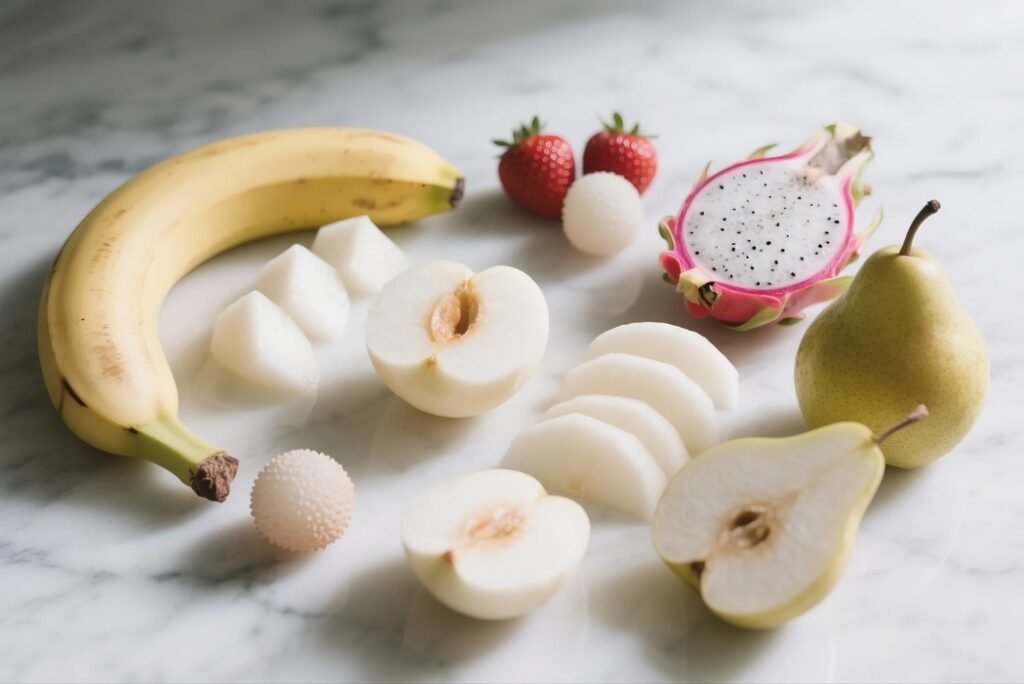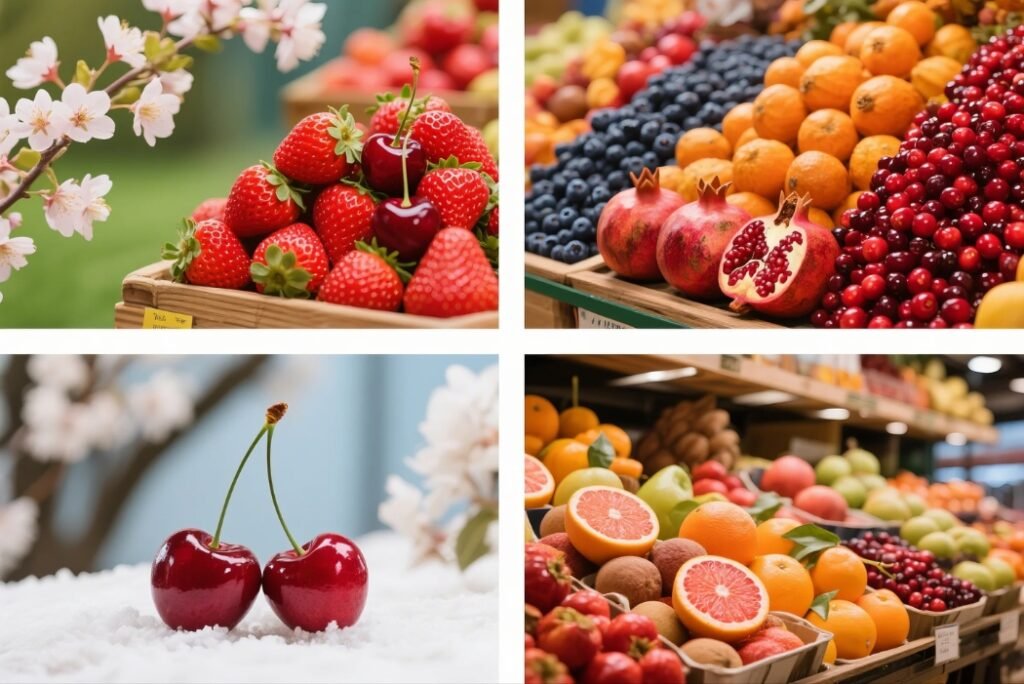Red White and Blue Fruits That Boost Your Health While Creating Beautiful Meals

The visual appeal of food plays a significant role in our dietary choices, and the vibrant colors of fruits often signal a wealth of nutrients. Among these, red white and blue fruits stand out not only for their aesthetic charm but also for their diverse health-promoting properties.
When combined on a plate or in a recipe, they create not just a patriotic display but a nutritional powerhouse that addresses multiple aspects of health simultaneously.
This comprehensive guide explores the fascinating world of these colorful fruits, their unique benefits, and how to incorporate them into your diet throughout the year.
Contents
Naturally Red Fruits: A Burst of Color and Nutrition
The realm of red fruits is abundant, offering a wide array of flavors and textures, all thanks to natural pigments like anthocyanins and lycopene. These compounds are not just responsible for the vibrant hues but also contribute significantly to the health benefits associated with these fruits.

Strawberries, widely popular and readily available throughout the year, are packed with vitamin C, manganese, and fiber. Their consumption is linked to improved heart health and potential regulation of blood sugar levels.
Red cherries, one of the most vibrant components in any red white and blue fruits arrangement, are available in both sweet and tart varieties, providing fiber, vitamin A, and folic acid. They’re known for their antioxidant and anti-inflammatory properties, potentially contributing to heart health.
Raspberries, often sweet with a hint of tartness, boast antioxidant properties and can help boost immunity. These soft berries are versatile in the kitchen, used in jams, pies, and enjoyed fresh.
Cranberries, known for their distinctly sour and acidic flavor, contain proanthocyanidins beneficial for urinary tract health. Beyond their traditional association with holiday dishes, cranberries can be incorporated into marinades, baked goods, and smoothies.
Red grapes contain resveratrol and flavonoids, compounds known to support heart health. They’re enjoyed fresh and are also the foundation for red wine, jams, and raisins.
Other notable red fruits include lychees, pomegranates, red currants, and wild red raspberries. Each brings its unique nutritional profile and culinary applications, highlighting the diversity within this color group.
Beyond berries, other red fruits like apples, tomatoes, watermelon, and various exotic options offer unique benefits. When planning a colorful meal featuring red white and blue fruits, these red varieties provide both visual appeal and nutritional density.
White Fruits: Subtle Hues, Significant Health Perks
While perhaps not as visually striking as their red and blue counterparts, white fruits offer a subtle elegance and a wealth of health benefits. The pale color often results from the presence of pigments like anthoxanthins.

Bananas, globally beloved, are an excellent source of potassium, Vitamin B6, and fiber. They play a significant role in digestive health and blood pressure regulation.
White peaches offer a sweet and juicy flesh rich in vitamins A and C, potassium, and fiber. They’re believed to contribute to skin health and add a delicate sweetness to any red white and blue fruits arrangement.
Lychees have a translucent white flesh rich in iron, phosphorus, and magnesium. This highlights how a single fruit can contribute to different color categories based on its various parts.
White strawberries feature white skin adorned with small red seeds, and their taste is often described as extremely sweet with a hint of pineapple. They make for an unusual but delightful addition to fruit platters.
Dragon fruit can have white flesh with black seeds, encased in a vibrant pink or yellow skin. Regardless of the flesh color, it’s a good source of Vitamin C and antioxidants.
Various pear varieties offer white flesh and are rich in fiber and antioxidants. Their culinary uses range from sweet pies and tarts to savory salads and elegant poached dishes.
Other white fruits include coconut, mangosteen, cherimoya, soursop, white sapote, juneberries, white currants, white mulberries, pineberries, and honeydew melon. Each brings unique flavors and nutritional benefits to the table.
The presence of compounds like anthoxanthins in white produce contributes to their health benefits, including potential positive impacts on cardiovascular health and a reduced risk of certain cancers. When creating a patriotic spread of red white and blue fruits, these white varieties add elegant contrast.
Blue Fruits: Nature’s Blue Jewels with Powerful Benefits
Blue fruits, often displaying hues ranging from deep indigo to bluish-purple, owe their captivating colors to anthocyanins, potent antioxidants that contribute to their significant health benefits.

Blueberries, perhaps the most well-known blue fruit, are celebrated as a superfood. They’re packed with antioxidants, particularly anthocyanins, as well as vitamins C and K, and manganese. Research suggests blueberries may benefit brain health, heart health, and blood sugar regulation.
Blackberries offer a delightful balance of sweet and tart flavors and are highly nutritious. They’re rich in fiber, manganese, and vitamins C and K, playing a role in blood clotting and bone health.
Elderberries, with their blue-purple hue completing the patriotic palette of red white and blue fruits, are well-known for their immune-boosting properties. They contain vitamins C and B6 and are often used as a natural remedy for colds and flu.
Concord grapes are aromatic, purple-blue fruits often used to make wine, juices, and jams. They’re high in antioxidants like resveratrol and flavonoids, which may contribute to heart health.
Other blue fruits include blue tomatoes, damson plums, huckleberries, black currants, blue Java bananas, blue dragon fruit, and various exotic varieties. The prevalence of blue and purple hues in this group is largely attributed to anthocyanins.
When composing a beautiful arrangement of red white and blue fruits, these blue varieties not only complete the patriotic color scheme but also add powerful antioxidants to your diet.
Embracing the Rainbow: Culinary Applications
Incorporating these colorful fruits into the daily diet is not only visually appealing but also a delicious way to enhance overall health and well-being.

For breakfast, consider adding berries to yogurt or smoothies. A morning parfait with layers of white yogurt, red strawberries, and blue blueberries creates a beautiful start to the day.
Lunch can include a refreshing fruit salad featuring a mix of red white and blue fruits, perhaps with a light honey-lime dressing to enhance the natural flavors.
For entertaining, create patriotic fruit skewers for national holidays or a refreshing red, white, and blue smoothie as a nutritious snack. A cheese board featuring red grapes, white pears, and blue berries offers both visual appeal and complementary flavors.
Desserts offer endless possibilities: think white cheesecake topped with red and blue berries, or a fruit tart arranged in concentric circles of color.
Seasonal Considerations

While many fruits are available year-round, knowing the peak seasons can help you enjoy them at their most flavorful:
- Spring: Strawberries begin to appear, along with early cherries and some white fruits like certain apple varieties.
- Summer: The bounty includes red cherries, raspberries, white peaches, blueberries, blackberries, and many exotic fruits.
- Fall: Look for cranberries, pomegranates, late-season apples and pears, concord grapes, and elderberries.
- Winter: Citrus fruits like blood oranges, stored apples and pears, and imported exotic fruits help maintain color in your diet.
By embracing seasonal availability, you can enjoy red white and blue fruits at their peak flavor and nutritional value throughout the year.
Conclusion
The exploration of naturally red, white, and blue fruits reveals remarkable diversity, each offering a unique blend of flavors, textures, and health-promoting nutrients. Red fruits are rich in anthocyanins and lycopene, white fruits provide essential vitamins and fiber, and blue fruits are nutritional powerhouses beneficial for cognitive and cardiovascular health.
By thoughtfully incorporating red white and blue fruits into your diet, you can create meals that are not only patriotically colored but also packed with complementary nutrients. This colorful approach to eating ensures a wide spectrum of beneficial compounds that support overall health while delighting the senses with varied flavors, textures, and visual appeal.

To fully enjoy these nutritious treasures, having the right tools makes all the difference. For precision cutting that preserves the delicate structures of berries, dragon fruit, and other soft fruits, consider exploring Hocho Knife’s selection of authentic Japanese kitchen knives. Their Petty knives are particularly excellent for detailed work with smaller fruits, while their Nakiri knives provide clean cuts that maintain the visual appeal of your fruit arrangements.
Hocho Knife’s commitment to traditional Japanese craftsmanship ensures exceptional sharpness and durability—essential qualities when preparing visually stunning fruit displays. Their knives, made with premium materials like VG-10 and Blue Steel, make fruit preparation a true pleasure rather than a chore.
Visit Hocho Knife’s website to explore their range and take advantage of these Hocho Knife coupons for the best prices. With the right Japanese knife in hand, your culinary adventures with red white and blue fruits will be even more rewarding and visually impressive.
Embrace the natural rainbow of red, white, and blue fruits to harness the power of nature’s bounty for a healthier and more enjoyable eating experience.





